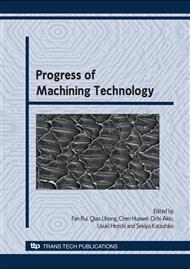p.694
p.698
p.705
p.710
p.714
p.718
p.723
p.727
p.731
Numerical Analysis of Surface Residual Stress of NC Milling 7075-T7451 Aluminum Alloy
Abstract:
The mathematic model was established between finished surface residual stress and milling parameters by orthogonal regression testing. The rationality of the model was certified by FEM and test. The simulation hypothesis and process were verified by the model. The test showed that the model and FEM were feasible.
Info:
Periodical:
Pages:
718-722
Citation:
Online since:
February 2009
Authors:
Price:
Сopyright:
© 2009 Trans Tech Publications Ltd. All Rights Reserved
Share:
Citation:


